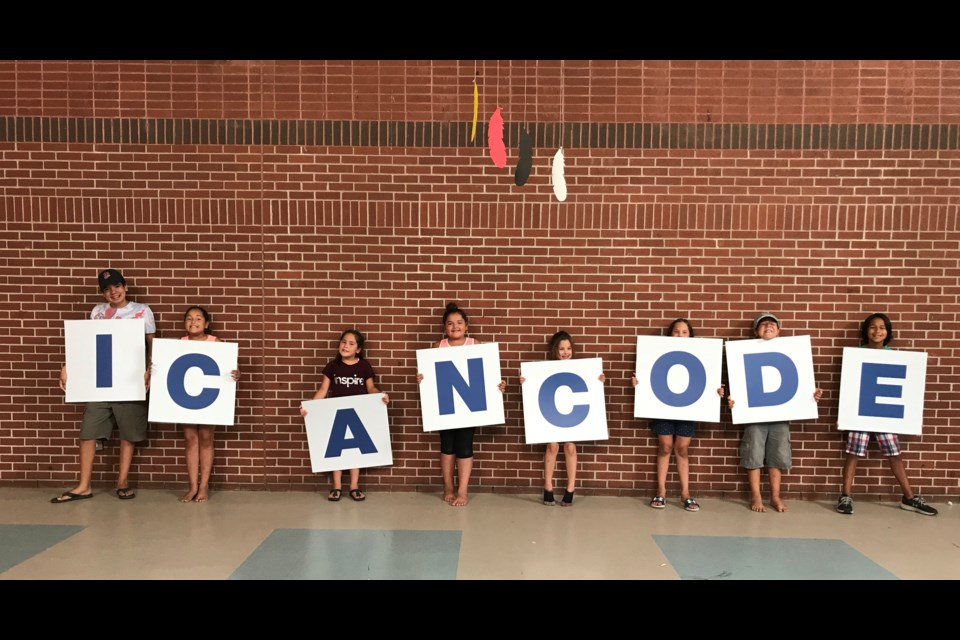A new website launched by Elephant Thoughts is contributing to the Indigenization of the digital world.
The new portal, called Coders North serves as an online space to bring together Indigenous digital producers and also as an educational platform highlighting opportunities for Indigenous youth to learn through digital technology.
Collingwood-based Elephant Thoughts, with support from the federal government's Cancode program, helped create the platform and website, and provides it as a free resource for Indigenous entrepreneurs and digital producers to use for sharing information and projects for free. As a result, it’s also a space where Indigenous youth can see others in their community who are working and creating in cyberspace, and they can learn more about the opportunities available.
“This platform is a place where Indigenous people can do anything with technology as it relates to their culture,” said Lisa Farano, of Elephant Thoughts.
According to Farano, education in areas such as coding and digital creative skills are not as accessible in many Indigenous communities, in particular those that are remote.
Not only is access to wifi hard to find, but coding education is not as available.
“If kids can learn to code, those are skills they can use anywhere,” said Farano. “Coding is exciting. It’s fascinating and so limitless.”
The producers are highlighted in the video library on the Coders North website. The series includes profiles on experts in their field, where both Indigenous people and their allies explain how they participate on the web in “purposeful and playful ways,” according to the site.
The featured experts include artists, web designers, coders, app designers, gamers and more.
For example, Kayley Inuksuk Mackay and Tiffany Kuliktana Ayalik, both of PiqSiq are Inuit style throat singers who perform both ancient traditional songs and make their own new compositions. The sisters are members of a Juno award-winning band, Quantum Tangle, and are both passionate about Inuit representation in cyberspace, according to the Coders North website, where they contributed their art and mentorship.
Meagan Byrne is a Métis game designer who is working as the digital and interactive coordinator at ImagineNative. She is also a contributor on the Coders North site.
One of the modules features teaching by Jon Corbett, a Métis coder and artist who wrote a computer program that uses a still photo to map out a beadwork version of the same image. He uses the computer generated map as a guide to create a beaded artwork. Corbett used the program to create a digital art piece that was shown at the Smithsonian. It was also part of his fine arts masters thesis. He is also building an Indigenous computer programming language based on the Cree language and syllabary.
The other features of the online portal include learning modules, which are interactive lessons prepared by teachers and designed for Grade 8 to 12 classrooms. The modules speak to computational thinking, coding, and Indigenous entrepreneurship.
To go along with those modules, there’s a Beadwork system, which tracks a student’s progress in coding by awarding “beads” each time he or she completes a coding activity.
There’s also a resource catalogue linking to current Indigenous-led coding programs on the website.
Finally, there’s a cultural mapping tool, which is interactive, available on the Coders North Website. The application is helping Indigenous communities map out traditional locations for historic elements of their culture, such as the location of a fishing spot, or a place where certain medicinal ingredients were grown, or the location of a longhouse. Some Indigenous communities are also using the mapping tool to list original place names and add a digital element to story-telling or other traditional ways of spreading knowledge.
According to Farano, schools on reserves receive 35 per cent less funding than their public counterparts often just a few kilometres away. She said there's still a disconnect in access to education for Indigenous people left over from the residential school system, and part of the goal for the Coders North program is to bring the latest in coding and digital skills education to Indigenous communities, and with Indigenous experts, artists, and producers delivering the content.
“We do a lot of our work based on the Truth and Reconciliation Commission call to action,” said Farano. “We have a collective responsibility to find a way toward rebuilding relationships and find our own calls to action … and the strongest way to solve an issue is from within.”
The Coders North website suggests the general population can take the content of everything they see on the internet for granted, and that can affect how people perceive and interact with others.
“Who is doing the creating then, has a profound impact on our societies,” states the website. “Indigenous peoples have been reclaiming their land, languages, traditions, worldviews, and, more recently, their right to participate as partners in Canada’s digital economy.”
Access to the Coders North portal and resources is free. Sign up here to view the content, participate in the interactive mapping initiative, and learn more about Indigenous content in the digital world.



